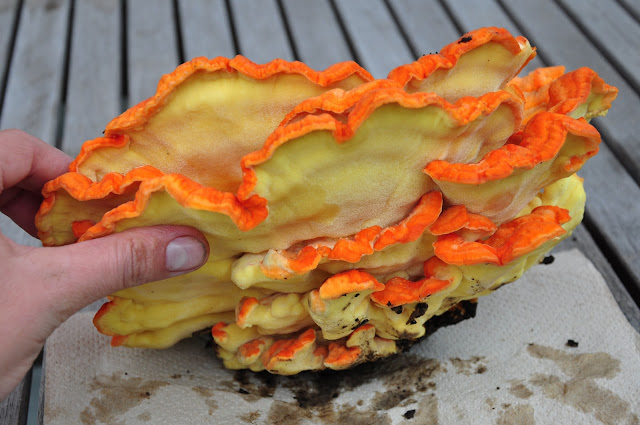Three kinds of Chanterelle in one outing, and a
mystery solved.
My personal favorite edible mushroom is the Golden Chanterelle. I was very happy to see these, it will probably be another good season for them. I still cannot get handle on the differences between some of the species. These could be C. cibarius, C. formosus, or the newly described C. californicus. I am going to call these C. cibarius, but there were a couple of small slender ones that I think are C. formosus. They smell like apricots and have a nice nutty flavor when sauted.
The first White Chanterelles that I have found that are in good enough shape to eat. They have all the attributes of the Golden ones without the apricot odor or nuttiness.
And the mystery solved is the Scaley Chanterelle. These were young fruitings before they flare out. The mystery
UFO is the nascent form of the mushroom. I originally thought it was some sort of club mushroom, it is really easy to be wrong about young fruitings. Unfortunately it is
not edible.














































